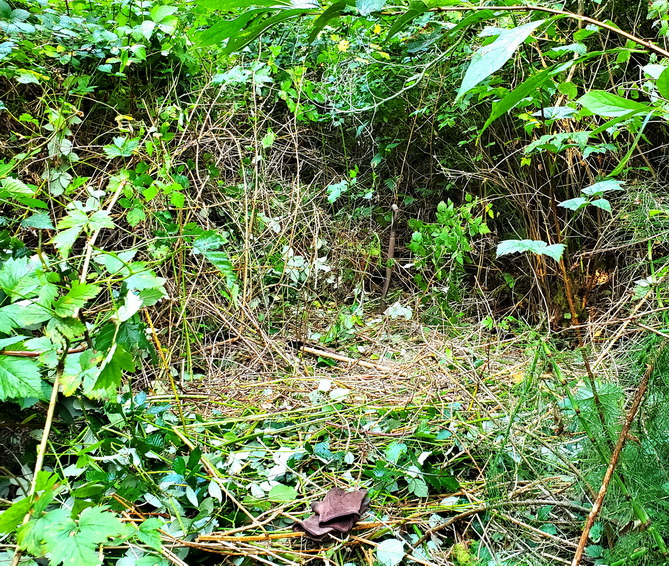Late fall seems to find me in a wetland untangling Himalayan Blackberry from Salmonberry. Most recently I was working on maintaining and extending a Bradley Line that protects an area of Salmonberry and Black Twinberry from old-growth Himalayan Blackberry (Rubus armeniacus).
In our berry-friendly Puget Lowlands, the most feasible approach to managing the invasive armeniacus can be a Bradley Line. A more apt term in this case might be a Bradley Swath, since the size and vigor of armeniacus dictates a line about 10 feet wide. The sizable swath encourages the native shrubs to advance and allows more light to reach the understory plants. The swath can also be a good place to plant trees that can eventually grow up and deter the armeniacus with shade.

The armeniacus grows so rampantly, that simply maintaining the line each year can be a significant accomplishment which means expanding the “good areas” can be a slow process. However, since it doesn’t take armeniacus very many years to overwhelm native shrubs, advancing the line is less important than protecting the native shrubs already there.
I end up working on this task in late fall for several reasons. First, since I’ve finally gotten ahead of the seed-producing weeds, I actually have some time to get to it. Also, it’s the driest that the wetlands are going to be all year, so I can usually get to the armeniacus without sinking in too deeply. And, with the armeniacus fruit way past its peak, I don’t feel like adding fruited stems to the compost pile is going to take it out of the mouths of hungry birds and chipmunks.
Each year I seem to be a little more methodical in working on the armeniacus and have fewer scratches on my arms to prove it. Most of the time I’m cutting back individual stems with hand clippers six inches at a time.
If I can easily snip my way all the way down an armeniacus’s stems to its base, I try to remove it and thus advance the cleared swath. I trim the stems until there’s just enough left to get a good grip. Young plants, growing in wet, soft ground can sometimes be pulled out of the ground by hand, roots and all. Older plants can usually be pried or dug out with a shovel. On private land, with the owner’s permission, the last resort is to cut the stems down close to ground level and brush some herbicide on the stumps. Sometimes it takes more than one year of the cut-stump treatment to completely kill the plant.
Though infestations of Rubus armeniacus are formidable, they can be contained with steel tools, patience, and a multi-year commitment to forest restoration.